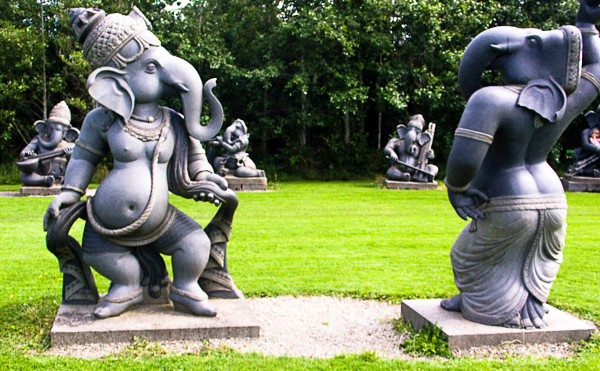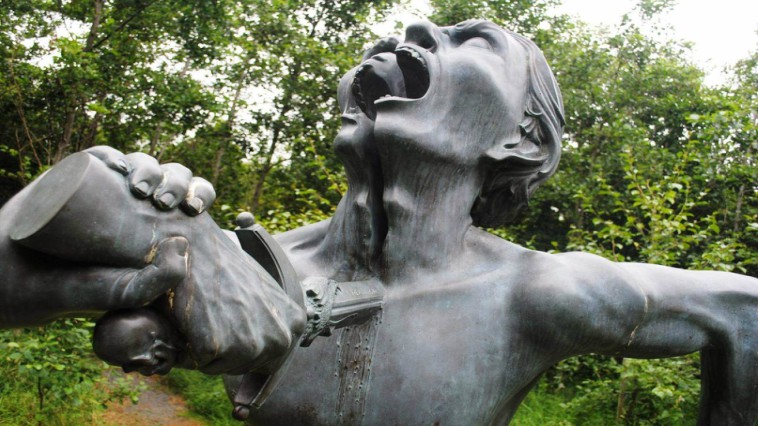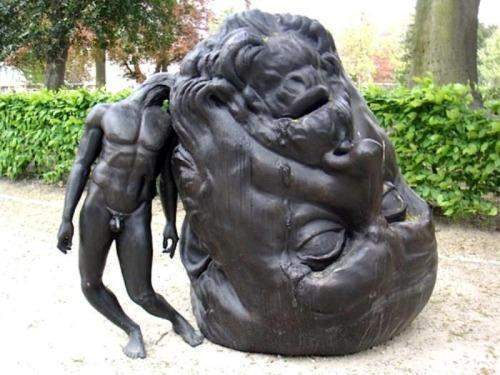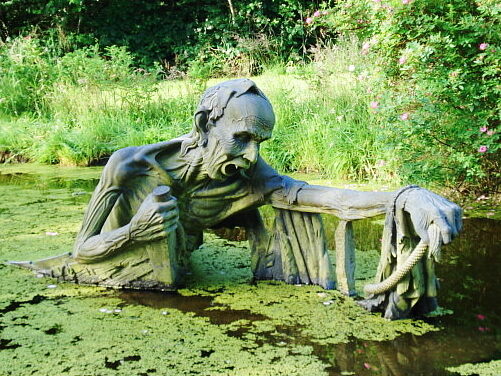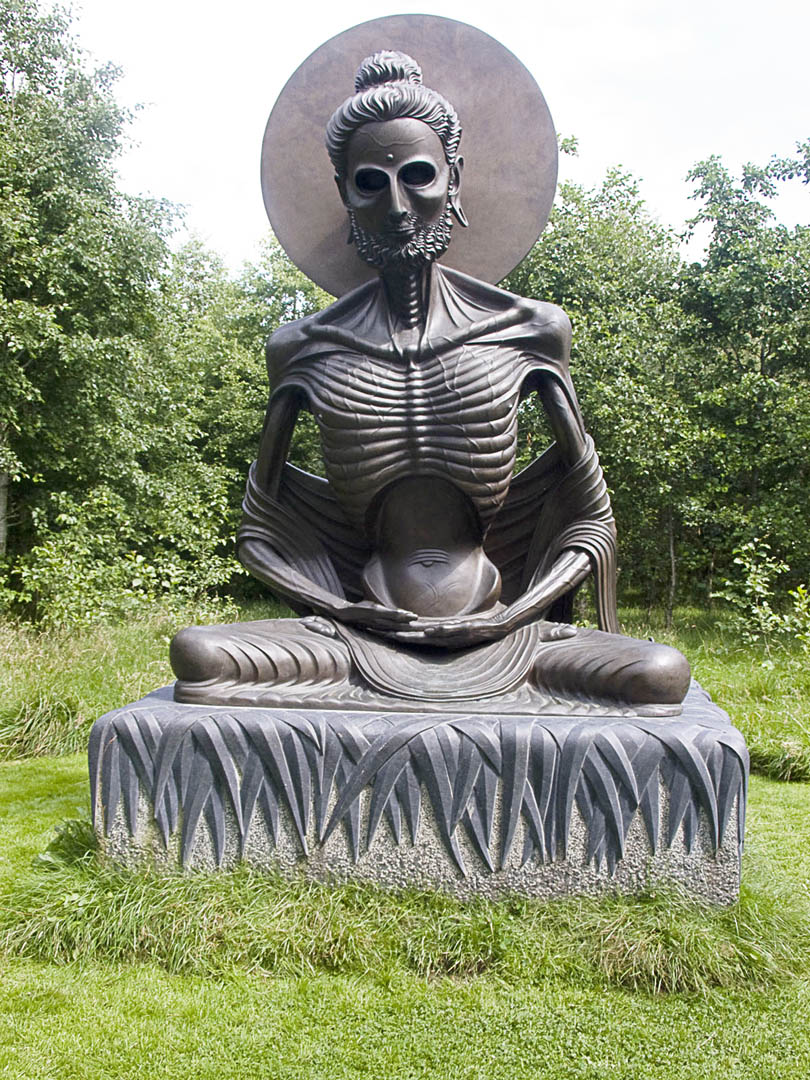WEST & SOUTH DUBLIN
National Museum. The first paper was invented in China in about 105 AD and the first printing was Chinese woodblock prints made in the 8th century. It was not until Gutenberg invented the first printing press in 1439, that mechanization started. The Gutenberg Bible was the first book printed from a moveable type. Ireland got its first press in 1551. That progressed until the 1860s when rotary presses could print 8,000 sheets per hour.
Until the 1880s all type was set by hand and then the linotype was invented that could cast a full line of type in one piece of metal. These processes continued to be improved until the 1980s when they were overtaken by modern computer technology.
These were all relief processes where the surface of the type was raised, but then planographic processes (lithography is based on the property that grease – ink – and water don’t mix; intaglio, screen, and digital followed) were developed.
One of the few surviving copies of the Proclamation read aloud by Patrick Pearce on April 24, 1916, is displayed.
All aspects of hand printing are shown: typesetting (this is where the expression “mind your p’s and q’s came from as type is set right to left and is a mirror image), typefaces, finishing (binding), paper manufacture, newspaper printing, and the many old printing presses all in working order (an informative 10-minute video explains them all).
Drimnagh Castle. Originally built by the Norman knight Hugh deBarnival in 1216, it first changed hands in the 1600s and was subsequently used as a family home. Its rectangular shape, tall 4-story stone tower, and battlements are all hallmarks of medieval times when it played an important role in protecting the town of Dublin. It is the only castle with a flooded moat in Ireland. The French-style garden is lovely. It does not function as a tourist site but rather as a training center for unemployed men to integrate them into work. €5 for a tour of the castle.
Our Lady of Mount Carmel Church. With its grey concrete block walls, its exterior is not impressive, but the inside is lovely with most of its walls full-height glass windows. Built in 1979, it has won some architectural awards. Like most Carmelite institutions, it is simple with no chapels or statutory and only nice woodblock carvings at both ends of the transept. A giant clamshell serves as the baptismal font.
Rathfarnham Castle. Built by Adam Loftus in 1583 as a fortified home, his heir remodelled it in the 18th century as a country house and ‘party place’. The Jesuits occupied it from 1913-1986 and are now owned by the state. The exterior is white stucco and 10 rooms are open to the public. With minimal furniture, the draw is the rooms with their old wood floors, marble fireplaces, one curved door, and decorative stucco ceilings, some painted. Highlight rooms are the octagonal room, Four Seasons room, and the Gilt room with cherubs painted on the ceiling. A temporary photographic exhibit was not impressive. €4 concession
Pearce Museum. In the wonderful walled St Enda Park with its wide lawns and old trees, this is in a house called the “Hermitage” built in the 1880s. Patrick Pearce rented it as his home and to house Siul Éanne, a boy’s Irish language school in 1910, where he was a teacher. Pearce had joined the Gaelic League in 1893 at age 16 and was a huge promoter of maintaining the Irish language. In 1912, he started his own newspaper to promote Irish nationalism and was a member of the militant Irish Republican Brotherhood.
On Easter Monday, 1916, he assumed the role of Commander-in-Chief and President of the Irish Republic and read the famous proclamation starting an open rebellion, the Rising, which at the time was very unpopular with the Irish public. The British Army sent in troops and by that Friday. Pearce and his group had surrendered. They were sentenced to death on May 2 and were the famous group of 14 executed at Kilmainham Gaol by firing squad. His younger brother William was a sculpturer and art teacher at the school, and although a minor player in the rebellion, was also executed. Their treatment galvanized the Irish public and their cause became national.
A fund was raised and the house and park were purchased as a family home for Pearce’s mother in 1920 who donated it to the state as a memorial to her sons.
It is lovingly furnished with original furniture. Also, there is the block where Emmet was beheaded after being hung in 1803 for trying to incite a similar rebellion. Free
SOUTH DUBLIN COAST
National Maritime Museum. Housed in the gorgeous Mariners Church (1843-1972 when it was deconsecrated) in Dun Laoghaire, this is Ireland’s principal collection of maritime artifacts, stories, and heritage. Exhibits are lifeboats and the story of the loss of the Palm; the sinking of the RMS Leinster in 1918 with 520 lives lost; steam propulsion; outboard motors, laying of the telegraph cable across the Atlantic, Irish lights with the large magnifying optic of the Baily Lighthouse on Howth Head, model ships in bottles and upstairs a wide range of more exhibits.
James Joyce Tower and Museum. Joyce stayed in this Martello Tower for just a week in September 1904, a month before he left the country for Italy. At the time, his host, the writer, and wit, Oliver St John Gregory, was renting the tower for £8 per year as digs during his medical studies. Joyce immortalized the tower as the setting for the opening chapter of his masterpiece, Ulysses.
The museum was opened in 1962 and shows many Joyce artifacts including a rare first edition of Ulysses and a deluxe edition beautifully illustrated by Matisse. I had a long chat with the three volunteers working in the museum.
The real treat for me was the Martello Tower. Twenty-six were built along the east coast of Ireland in 1804-06 against the threat of invasion from Napoleon and 15 were between Dublin and Bray in the south – all separated by a distance that could be signaled. This tower at Sandycove is #11. Built with 2.5m thick, granite circular walls and an armoured door 4m off the ground, the ground floor was the magazine for gunpowder and accessed from the floor above. Gregory lived on the 3rd floor with its barrel-vaulted ceiling. Ascend the tiny spiral staircase to the gun platform on the roof for panoramic views of Dublin Bay. The 18lb cannon fired a round shot that could travel 1½kms or the more effective canister shot (heated in an oven, range 200m and very effective against wooden boats). Not one of the Martello towers in Ireland ever fired a shot, as Napoleon never came.
Sandy Cove is a small beach very busy in the late afternoon on the warm and sunny day in Ireland that I was there. Many people were in the water, not swimming but just standing around.
Dalkey. Around the coast of Sandycove, this is a pretty seaside suburb of Dublin. In medieval times, it prospered as a fortified settlement and as the main port of Dublin, until the dredging of the River Liffey in the 16th century took away its business. It is now the home to commuters and celebrities. A popular activity is skiff racing – long natural wood rowboats (4 rowers) and I watched part of a practice. Each took at least 10 strong men to put them in the water. It was laborious watching them put the three boats in and take them out after practice. Regattas are held throughout the summer.
Dalkey Island. Only 300m offshore, it is accessed by Ken the ferryman from Coliemore Harbour, just south of Sandycove – trips are every day of the week from 9 am-5 pm (€8 return). The 5-acre island has a Martello tower and the ruin of a 7th-century church, last used by the men building the tower. There are sea birds, seals, feral goats, and rats.


Killiney. Fronted by a beautiful beach, all ambiance is destroyed by the DART rail line and the village of high-end houses that flank the beach.
Walking up to the top of the Dalkey and Killiney Hills offers panoramic views of the city and its environs. Dalkey Hill’s summit has a crenellated former telegraph station, then continues onto Killiney Hill with its stone obelisk and even better views. The whole thing takes only about an hour from the DART station.
WICKLOW COUNTY
Powerscourt. In the NE foothills of the Wicklow Mountains, 19 km south of Dublin and near Eniskerry, is this massive estate. More a leisure complex with a golf course, craft shops, and a luxury hotel, the main attraction is the formal gardens.
The Anglo-Norman le Poer (Power) family built a castle here but what you see dates from the 18th century – a Palladian mansion whose interior was destroyed by a fire in 1974 and now houses an exhibition of doll’s houses and toys. The terraced Italian gardens were designed in 1843 complete with many statues and a lake with a sea god firing a jet of water 30m high. A Japanese and a walled garden complete the ensemble. The main attraction is the 120m waterfall (Ireland’s highest) that’s 6kms from the main gate. I don’t think it was worth the price. €10 + €6 for the waterfall.
Victor’s Way Statue Garden. Use Google Maps to find it as there is no sign until Victor opens the gate. I arrived at 10 am to find it opened at 12:30 but decided to wait around. Victor opened the gate at 11, drove away and I had the place all to myself. Wow! I’m glad I waited as this may be the best attraction in all of Ireland.
I estimate that there are well over a million Euros worth of statues here. Victor has had everything produced from his designs in India from black granite – most weigh 2-3 tons; then there’s the three cast bronze statues – the Mother and Child, Split Man, and the Fasting Buddha (this one alone cost €130,000). The detailed carving and polishing are exquisite. Everything is meant to last forever. And the setting in the field and forest coupled with Victor’s unique life philosophy makes it the most interesting, original, and best statue garden in the world.
After putting your €5 in the hole (one of the best deals on the planet), start at the tunnel, a mammoth vagina flanked by two Amazonian women and dedication to Alan Turing. The statues in the field in order are a cobra in the far corner, an elephant, a Ganesh reading, a Ganesh band (drums, sitar, flute, cello-like, and bagpipes), and a Ganesh observing a Ganesh dancer. Then enter the lovely birch forest on a meditative experience: Awakening (joyful child clutched by a rotting fist), Dark Night of the Soul (the 14’ 6” fasting Buddha, a copy of a 2’ stone statue in Pakistan), Self Realization, Split Man, Ferryman’s End (skeletal figure in a pond), Buddha, Mother and Child, 11 Buddhist stupas, forest ponds one with a stupa on an island and another with Shiva, Nirvana Man (Victor denied that this symbolized him) and the final main piece, a phallic finger monolith with “Create or Die” and “Die and Create” in the center of an oval field ringed by trees. Near his house is an iconic Eve with some insightful writing and several more Buddhas and small statues. Wow!
I was happy to see Victor had arrived back and we sat on the bench in front of his unassuming house for a 1½ hour talk – he is one of the great (and least appreciated) philosophers of our time. This 78-year-old has lived a full life of experiences – I found the whole place, and especially Victor, a life-changing event.
Victor suggested I drive by way of the Sallygap and then turn south to Glendalough. One immediately climbs up into the Wicklow Mountains, a huge blanket bog, passes the Wicklow Trail and some fine viewpoints down to a lake to reach the intersection at Sallygap Pass. I sat and had lunch at a nice viewpoint. The drive continues through the bog and finally descends into a lovely valley with a stream full of boulders.
Glendalough. One of the Early Medieval Monastic Sites that make up one huge Unesco World Heritage Site, of them all Glendalough may have the best setting in the heart of Wicklow National Park. However, it is unbelievably touristy with multiple tour buses and next to a big hotel – any atmosphere is destroyed.
Huntington Castle. In Clonegal, Carlow County but reached most easily from Wicklow, this is the ancient seat of the Esmonde family and presently lived in by the Durdin Robertsons, descendants of the Esmondes. It sits in the countryside at the foot of the Blackstairs Mountains. The granite keep was built in 1625 and added onto several times and now presents a pleasant jumble of changing rooflines.
The house is tastefully decorated with no armoury and few stag heads. The Temple to the God Isis in the old dungeons is the most interesting part. Olivia Robertson (who recently died at age 99) was a member of this 32,000-strong cult loosely based on Druidism. She was often on TV and was on YouTube.
Backing onto the River Derry, the highlight of the gardens is the 500-year-old Yew walk and several champion trees. €9 house and gardens, €5 gardens only.
FERRIES to WALES
Options include the Dublin to Holyhead or P&O’s to Liverpool (the cheapest at €129) routes or Rosslare on the SE corner of Ireland to Pembroke or Fishguard in Wales.
I used Stena Line from Rosslare to Fishguard. The Stena website price was an astronomical €433 but on Ferrysavers, the price was €153 – just over ⅓ the price. These are travel agents who purchase block tickets. Reserve early in the high season to get these prices. Interestingly the price for a car (Volkswagen California) was €193 and the van less than 6m long and 2m high was €153.
Departure is twice a day – I departed at 08:00 and arrived at 11:15 on a windless but foggy day.
SUMMARY of IRELAND
I spent 22 days on the Emerald Isle (Northern Ireland and Ireland) and didn’t miss much. I took a day off for once waiting for the weather to clear to go to Skellig Michael – but it never did and missed one of the highlights of the country. Ireland is surprisingly mountainous with immense areas of blanket bog in the west – there are hundreds of mountains and ridges to climb. The Wild Atlantic Way, at 2500 km, is the longest signed coastal road in the world.
The Irish people are lovely. I congratulate them on voting YES to repeal the law banning abortions. And look forward to seeing how they draft new laws – hopefully, they will copy Canada where there is no law.
Roads are much better than in England and Irish drivers are a very polite, if not overly timid bunch. It was nice to be operating on metric kilometres, km/hour, and the Euro. Food is more expensive, but gas is cheaper, especially diesel.
My highlights were The Church at Burt, climbing two mountains, the mountainous and blanket bog of the west, Aran Islands, Conor Pass, The National Museum of Archaeology, and of course Victor and the best tourist site in Ireland, Victor’s Way Sculpture Garden.

